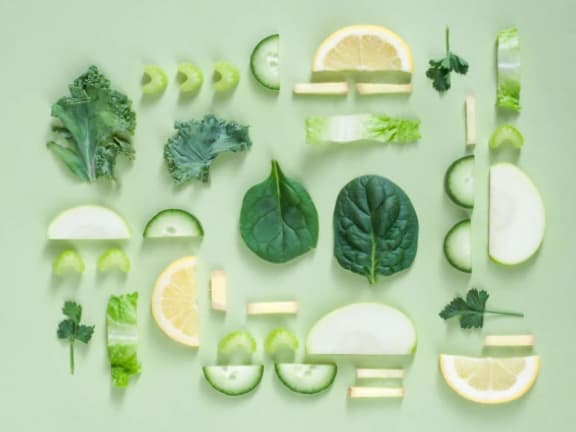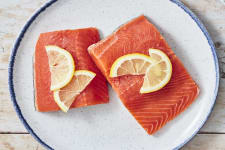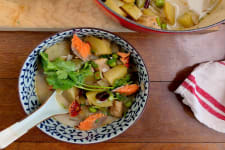When you’re on a health kick, vegetables are a trusty plant-based sidekick to the protein on your plate. And in many of the diets popular today, lean varieties of wild-caught fish are an optimal protein of choice due to everything from their high-quality nutritional profiles to their anti-inflammatory characteristics to their basic, low-calorie nature.
Whether you’re following a specific diet or are simply looking to get more veggies into the mix to support your health, you can do more than just prepare a separate side to accompany your meal. We have some efficient, integrated approaches to pairing vegetables with wild-caught seafood that will help you to make these pairings a culinary art.
Low-Carb, High-Fat Diets
When you’re following a low-carb, high-fat dietary protocol like a ketogenic diet, look to recipes that enhance the fat profile of your seafood while repurposing this fat as a sauce or dressing for your vegetables.
Poaching your seafood in grass-fed butter, ghee, or olive oil is one approach to creating healthy, high-fat meals, as it not only ups the amount of good fats you’re consuming, but also produces tender and flavorful fillets of fish. It also leaves you plenty of fat to play with in regard to your vegetables. This recipe from Serious Eats for oil-poached salmon is the perfect keto dish, making use of the poaching oil by repurposing it for a lemon-herb dressing to toss with a medley of shelled peas, snow peas, and asparagus.
Butter poaching can be a similar process, but to make the most of it you’ll want to repurpose the poaching fat into a beurre monte — it’s like a beurre blanc — that can be drizzled over your low-carb veg of choice.
Grain-Free, Legume-Free Diets
For diets where you can integrate a moderate ratio of certain high-quality carbohydrates that eschew legumes and grains, sheet pan meals keep your kitchen routine slim, making easy work of tubers, veggies, and seafood alike. Tender vegetables cook up as quickly as fish, while root veggies and winter squashes can be used to build varied and filling meals.
Since seafood cooks relatively quickly, you’ll sometimes need to give carb-rich veggies — produce like roast potatoes, carrots, butternut squash — a headstart in the oven so they have ample time to soften or caramelize before adding fish and tender veg like asparagus or summer squash to the sheet pan for the final stretch of cooking.
This recipe from Eat Well Abi for sheet pan white fish is made with plantains, peppers, and green beans spiced with a dry harissa spice blend. It doesn’t require you to stagger cook times, which keeps things streamlined. It also comes together in just 15 minutes in a 375 degree oven, making it a go-to recipe for a flavorful, weeknight meal even when you’re exhausted. Cod and rockfish would be perfect choices of protein for this dish.
Calorie-Restricted Diets and Beyond
When your diet calls for calorie restriction, non-starchy veggies are going to be a key element of your meals. They’re substantial and nutritious, delicious raw or cooked, and reflect the best of what each growing season has to offer in flavor and variety. To keep things easy while melding all this deliciousness together, you can cook your veggies and seafood together as a one-pot meal.
Or, poach your veg and protein together for something that feels lighter. This recipe from Serious Eats simmers a trio of summer veggies with ginger and onion to create a broth in which you’ll poach a fillet of salmon, finishing the dish with a fresh topping of sweet cherry tomatoes and scallions tossed in a small amount of olive oil. Check out our blog post for more meals that are low-calorie but high-impact in terms of your health and your culinary taste.
And for less regimented diets or for times when you’re simply trying to get more veggies into your recipe rotation, you’ll want to check out our blog post on seafood salad ideas. Whether it’s a grain-based salad made with quinoa and kale, or a hearty potato salad made with leftover flakes of salmon, these salad ideas are anything but boring and will keep your diet diverse to better support your health goals.






